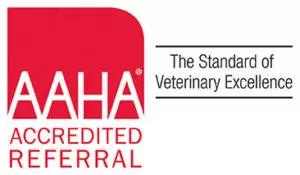Motion Palpation and Veterinary Medical Manipulation
Orthopedic conditions are common in pets, but structural changes seen on X-rays and other imaging modalities often don’t correlate with the patient’s signs. When a pet’s joint range of motion is restricted, significant repercussions, including neck or back pain, lameness, organ dysfunction, and a reduced immune response, can result. Veterinarians qualified in motion palpation and Veterinary Medical Manipulation (VMM) techniques can help restricted pets regain healthy joint movement and reduce their muscle tension, alleviate pain, strengthen muscles, and re-nourish cartilage and nerve tissue.
What is motion palpation in veterinary medicine?
Motion palpation involves a veterinarian’s hands-on examination of every vertebral junction for functional changes, with the veterinarian taking each joint through its entire range of motion to detect motion loss or increased resistance to induced motion. Potential spinal segmental dysfunction issues, or restrictions, include:
- Symmetrical or asymmetrical joint mobility loss in one or more planes
- Localized pain
- Increased pain when pressure is applied to surrounding muscles and bony structures
- Active inflammation or chronic tissue changes, such as swelling, tissue thickening, redness, and altered surface temperature, that can be visualized or palpated
In many cases, joints with segmental dysfunction issues appear completely normal when viewed on X-rays or other diagnostic imaging techniques.
How do restrictions affect pets?
Restrictions have numerous consequences for pets, including:
- Local effects — Restrictions can cause tissue adhesions, joint cartilage degeneration, and decreased blood flow to the joint, and the mechanical stress, muscle tension, and inflammation can alter nerve function and be painful.
- Compensatory effects — Joints adjacent to the restricted joint become hyper-mobile to compensate, increasing their injury risk and their susceptibility to degenerative joint disease (i.e., arthritis). In addition, when surrounding muscles attempt to stabilize the hyper-mobile joint, they contract more than normal and become tense, which places more stress on tendons and increases injury risk.
- Systemic effects — Chronic pain and inflammation can lead to systemic effects, such as organ dysfunction and a weakened immune response.
What is Veterinary Medical Manipulation?
VMM is similar to human chiropractic care and involves correcting specific restrictions and restoring normal range of motion using a high velocity, low amplitude (HVLA) thrust in the joint’s plane. The veterinarian can perform these manipulations hands-on or with specialized instruments designed for pets.
What are the signs that my pet may benefit from Veterinary Medical Manipulation?
Signs that indicate your pet may benefit from VMM include:
- Neck or back pain
- Abnormal gait or undefined lameness
- Abnormal posture or stance
- Reduced performance
- Reluctance to move, jump, or climb stairs
- Stiffness
- Discomfort when being petted, groomed, or lifted
- Recurrent digestive problems or incontinence
- Recurrent infections
- Lick granulomas
Who performs Veterinary Medical Manipulation?
A thorough knowledge of structural anatomy, neurophysiology, and biomechanics, as well as spine and extremities pathologies, is critical for understanding VMM principles and applying the techniques appropriately. This means that veterinary and specific chiropractic training is essential. Motion palpation and VMM should be performed only by qualified veterinary professionals who have completed additional specialized animal chiropractic training and certification to ensure safe and effective treatment for animals.
What can I expect during my pet’s Veterinary Medical Manipulation appointment?
A typical initial VMM appointment begins with a thorough history and physical examination. Depending on your pet’s condition, the veterinarian may first recommend diagnostics, such as X-rays or blood work, and then perform a motion palpation examination, correcting the restrictions with VMM techniques. Most pets relax and show no pain or anxiety during these manipulations. Depending on your pet’s case, they may be sent home or remain in the hospital for overnight observation. Some pets respond quickly to treatment and need only one or two adjustments, while those with chronic conditions may benefit from regular VMM sessions. Your veterinarian will determine the best protocol for your pet.
VMM is often used in conjunction with other veterinary treatments, such as medication, surgery, acupuncture, physical rehabilitation, and food therapy. For more information about VMM and the Integrative Medicine services provided by Dr. Michel Selmer, contact Long Island Veterinary Specialists at (516) 501-1700, or visit us at livs.org.


